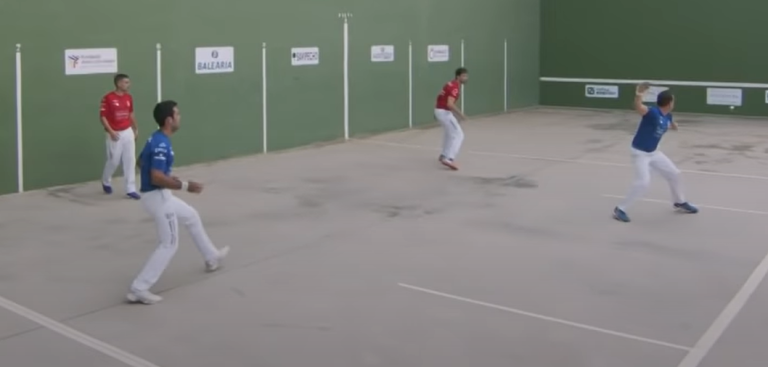General Rules of Twenty20 Cricket
You may think Twenty20 cricket is just about big hits and entertainment, but there's more to it than meets the eye. Fielding Restrictions, Powerplay Overs, Maximum Overs per Bowler – these are just a few of the crucial rules that shape the game.
Ever wondered how the Free Hit Rule or Strategic Timeouts impact the flow of the match? And what about the nail-biting Super Over Tiebreaker?
Stay tuned to uncover the intricate details that make Twenty20 cricket a thrilling and dynamic sport.
Fielding Restrictions
When fielding in a Twenty20 cricket match, you must adhere to specific restrictions that limit the placement of fielders in strategic positions to create a balanced playing field. These restrictions are crucial in maintaining the essence of the game and ensuring a fair competition between the batting and fielding sides. In Twenty20 cricket, the fielding team is allowed to position a maximum of five fielders on the leg side and four on the off side during the non-powerplay overs. This limitation aims to challenge the fielding team to come up with innovative strategies to contain the batting side while also providing opportunities for the batsmen to score runs effectively.
Fielding positions play a significant role in determining the outcome of a Twenty20 match. Placing fielders in key positions such as slips, gully, point, cover, mid-off, mid-on, and fine leg can help in creating pressure on the batsmen, leading to wickets. Additionally, boundary fielders are strategically positioned near the boundary line to prevent the ball from crossing over for a boundary. Having agile and quick fielders in these positions is essential to restrict the opposition from scoring easy runs.
Understanding the dynamics of fielding positions and the importance of boundary fielders can give your team a competitive edge in a Twenty20 cricket match. By strategically placing fielders and utilizing them effectively, you can control the flow of the game and put pressure on the batting side to make mistakes, ultimately leading to success on the field.
Powerplay Overs
Fielding restrictions in Twenty20 cricket set the stage for strategic gameplay, and within this framework lies the critical phase known as the Powerplay Overs. During the Powerplay Overs, both batting and bowling teams employ specific tactics to gain an advantage early in the game.
- Batting Strategies
- Aggressive Approach: Teams often opt for aggressive batting during Powerplay Overs to capitalize on the fielding restrictions. This involves taking calculated risks to score boundaries and maximize the run rate.
- Rotating Strike: Another effective strategy is to focus on rotating the strike to keep the scoreboard ticking. By taking quick singles and twos, the batting team can maintain momentum without risking big shots.
- Targeting Weak Bowlers: Identifying and targeting the weaker bowlers in the opposition's lineup can be a successful tactic during the Powerplay Overs. By putting pressure on these bowlers, the batting team can secure a significant advantage early in the match.
- Bowling Tactics
- Mixing Up Deliveries: Bowlers often vary their deliveries during Powerplay Overs to keep the batsmen guessing. Mixing up pace, length, and line can disrupt the batsman's rhythm and lead to wickets.
- Attacking Field Placements: Captains may opt for aggressive field placements during Powerplay Overs, placing fielders strategically to create catching opportunities and build pressure on the batting team.
- Utilizing Specialist Bowlers: Teams may introduce specialist bowlers during the Powerplay Overs to exploit specific matchups or exploit the weaknesses of the opposition's top-order batsmen.
Understanding and executing effective batting strategies and bowling tactics during the Powerplay Overs can significantly impact the outcome of a Twenty20 cricket match.
Maximum Overs per Bowler
In Twenty20 cricket, the restriction on the maximum number of overs per bowler plays a crucial role in shaping bowling strategies and managing player workload efficiently. With a limit typically set at four overs per bowler in a match, teams must carefully implement a rotation policy to ensure bowlers are used effectively while avoiding overburdening them. This rule not only influences in-game tactics but also impacts long-term player fatigue management.
Performance analysis and data tracking are essential tools for teams to optimize their bowling resources within the constraints of the maximum overs per bowler rule. By monitoring each bowler's effectiveness, captains can make informed decisions about when to utilize specific bowlers based on matchups, pitch conditions, and opposition strengths and weaknesses. This analytical approach enables teams to maximize the impact of their bowlers while preventing them from reaching their over limit too early in the innings.
Additionally, the maximum overs per bowler regulation encourages teams to develop a deep and versatile bowling lineup. By nurturing a diverse group of bowlers with varying styles and specializations, teams can adapt to different game situations and counter the strategies employed by their opponents effectively. Ultimately, the restriction on the number of overs per bowler promotes strategic thinking and innovation in team selection and bowling tactics, enhancing the overall competitiveness and excitement of Twenty20 cricket.
Free Hit Rule
The Free Hit Rule in Twenty20 cricket introduces a unique dynamic that significantly impacts both bowlers and batsmen. When a no-ball is bowled, the next delivery becomes a free hit, allowing the batsman to swing freely without the fear of getting out, except for specific dismissals. However, this rule also puts pressure on the bowler to avoid further consequences by delivering a legal ball. The umpire signals a free hit by raising one arm straight up, triggering different reactions among players. Batsmen often see it as an opportunity to score big, while bowlers feel the heat to rectify their mistake promptly.
The Free Hit Rule adds an intriguing layer to the game, offering an adrenaline rush for players and keeping the audience on the edge of their seats. It serves as a moment of liberation for the batting side and a test of nerves for the bowling side, showcasing the intense and dynamic nature of Twenty20 cricket.
Strategic Timeouts
The strategic timeouts in Twenty20 cricket can serve as crucial moments for teams to pause, regroup, and strategize in the midst of a high-pressure match scenario. Timeout strategy becomes paramount during these brief breaks, allowing teams to assess the game situation, make necessary adjustments, and plan their next moves strategically.
Strategic timeouts aren't merely about physical rest but also about mental rejuvenation. They provide players with a chance to refocus, calm nerves, and reset their mindset. The psychological impact of these timeouts shouldn't be underestimated. Teams often use this time to boost morale, motivate players, and instill confidence, which can be a game-changer in close contests.
Coaches play a pivotal role during strategic timeouts, offering insights, analyzing the opposition's strategy, and providing guidance to their players. Captains lead discussions, make tactical decisions, and ensure everyone is on the same page. These moments can be intense yet valuable, as they allow for quick thinking, adaptability, and unity among team members.
Effective utilization of strategic timeouts can turn the tide of a match. Teams that capitalize on these breaks by implementing sound timeout strategies and leveraging the psychological impact often find themselves with a competitive edge. In the fast-paced environment of Twenty20 cricket, these timeouts can be game-defining, making them a crucial aspect of a team's overall performance.
Super Over Tiebreaker
Amidst the intensity of a tied match in Twenty20 cricket, the Super Over tiebreaker emerges as a decisive and exhilarating method to determine the victor. When the scores are tied at the end of the main match, this high-stakes showdown adds a thrilling dimension to the game, keeping spectators on the edge of their seats.
- Boundary countback: In a Super Over, if the teams remain tied after the set number of deliveries, the boundary countback rule comes into play. The team with the most boundaries (fours and sixes) in the main match and the Super Over combined is declared the winner. This rule has sparked controversy in the past, with debates around whether boundaries are the fairest way to determine the winner.
- Fair play, spirit of cricket: The Super Over isn't just a test of skill but also a test of sportsmanship. It's essential for players to uphold the spirit of cricket even in the intense moments of the tiebreaker. Fair play is crucial in maintaining the integrity of the game and respecting the opponents.
- Excitement and drama: The Super Over injects a burst of excitement and drama into the match, creating a nail-biting finish that can swing either way. It showcases the unpredictable nature of Twenty20 cricket and the thrill of sudden-death moments that define this format.
Frequently Asked Questions
What Is the Role of the Third Umpire in Twenty20 Cricket Matches?
In Twenty20 cricket, the third umpire plays a crucial role in decision-making. Utilizing technology like video review, they overturn on-field calls. Did you know, emotions run high when a game-changing decision is made?
Can a Fielder Change Position During an Over in Twenty20 Cricket?
Yes, you can make fielder positioning changes during an over in Twenty20 cricket. These strategic adjustments can be crucial in adapting to the game's dynamics and outsmarting the opposition. Stay agile and responsive.
Are There Any Restrictions on the Size or Weight of the Bat Used in Twenty20 Cricket?
Imagine your bat is your sword, your trusted companion on the cricket battlefield. In Twenty20 cricket, there are regulations on bat size and weight to ensure fair play and player safety. Let your weapon be swift and just.
How Are Rain Delays or Interruptions Handled in Twenty20 Cricket Matches?
When rain delays hit Twenty20 cricket, pitch conditions change, affecting match outcomes. Player availability becomes crucial, leading to possible match rescheduling. Stay prepared for unpredictable interruptions that can shift the game's dynamics.
Can a Player Be Substituted During a Twenty20 Cricket Match if They Are Injured?
If a player is injured in a Twenty20 match, they can be substituted with another player. This substitution must be approved by the match referee. Player availability is crucial, and injury protocol allows for necessary substitutions.






